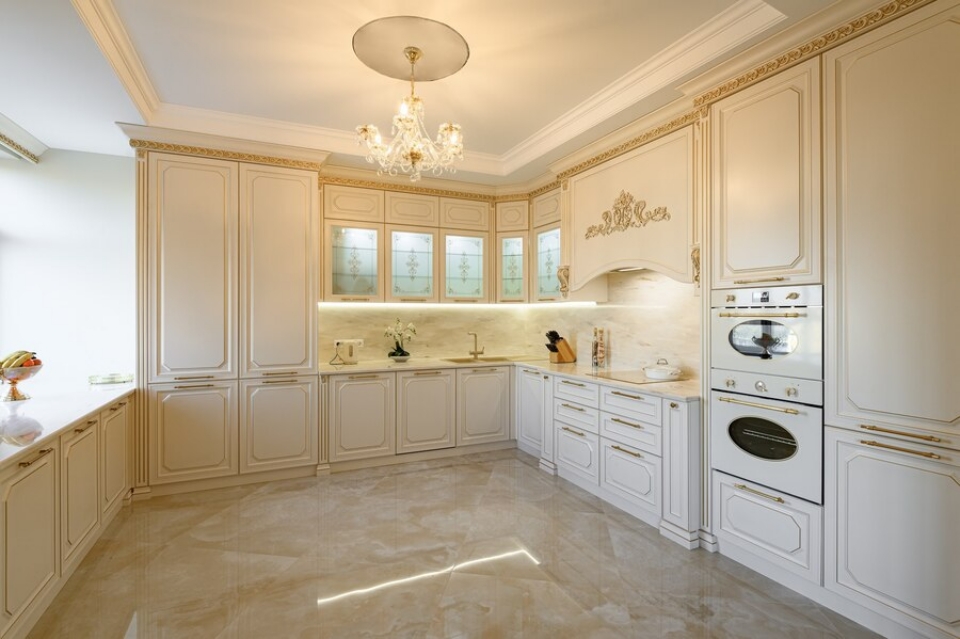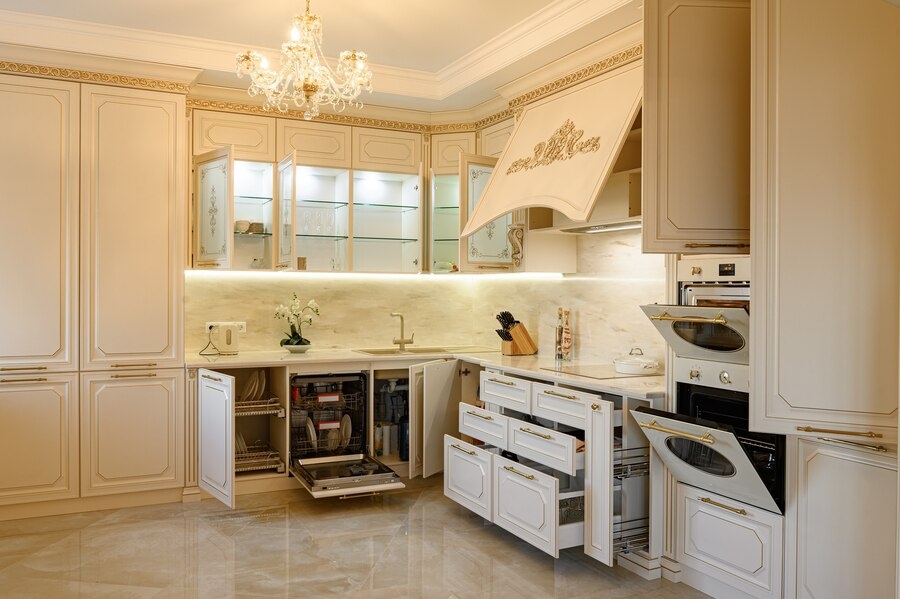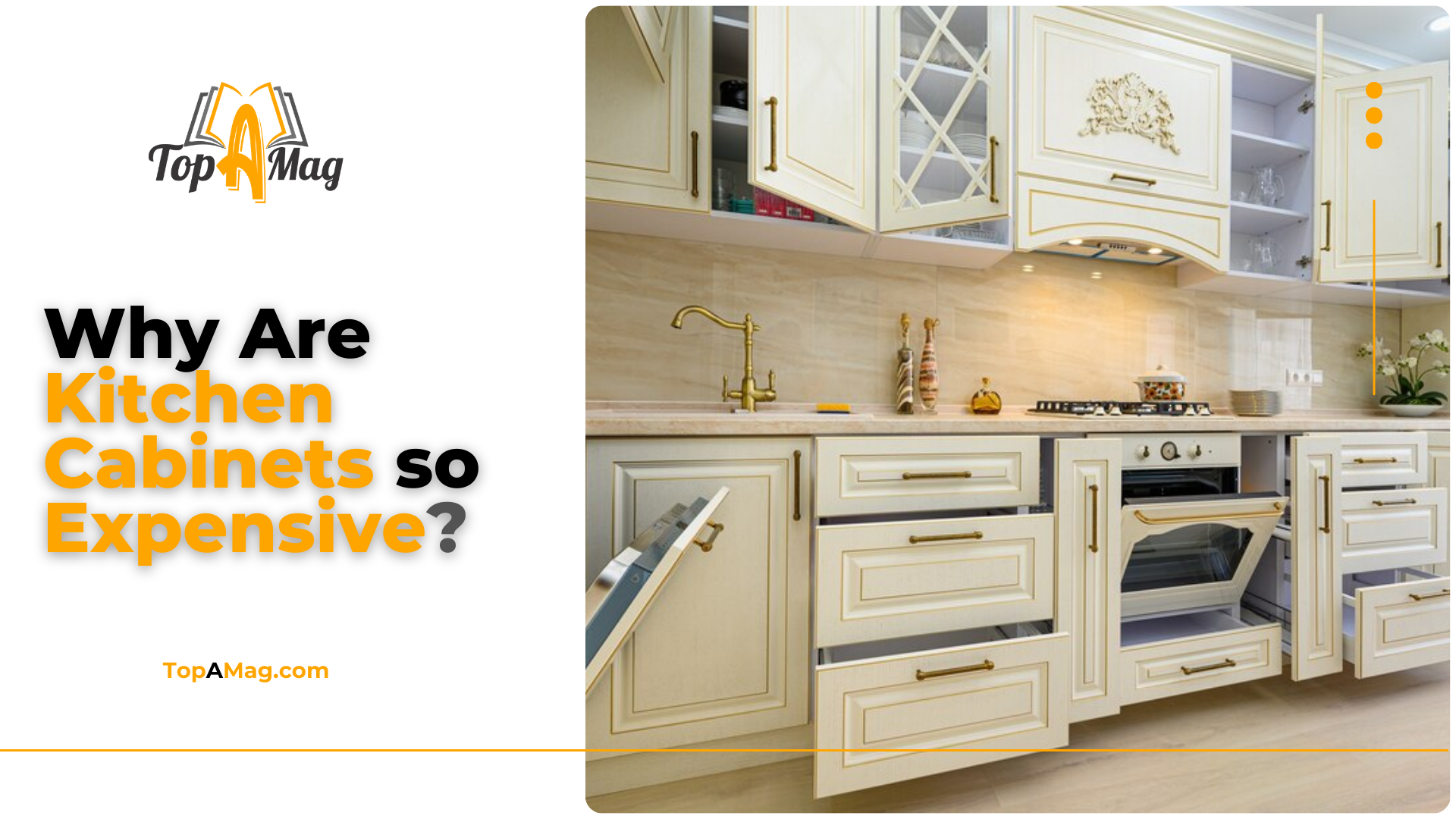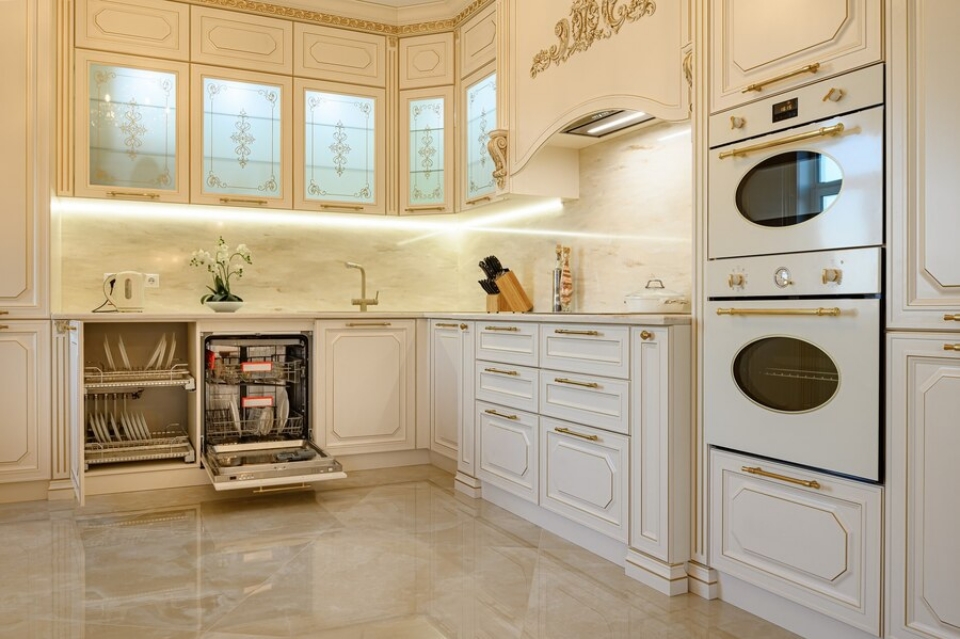Kitchen cabinets are a cornerstone of modern kitchen design, providing both functionality and aesthetic appeal. However, many homeowners are often taken aback by their high cost. This article By Top A Mag Team delves into the reasons behind the expensive price tags attached to kitchen cabinets, breaking down the various factors that contribute to their overall cost. By understanding these elements, consumers can make more informed decisions when planning their kitchen renovations.
Key Takeaways
- Material quality is a significant factor in the cost of kitchen cabinets, with solid wood being more expensive than particleboard or MDF.
- Customization and bespoke designs increase costs due to the detailed planning and craftsmanship involved.
- The manufacturing process and labor-intensive techniques used by high-end manufacturers contribute to higher prices.
- Hardware and accessories such as high-quality hinges, drawer slides, and handles add to the overall expense.
- Brand reputation and sustainability considerations can also impact the cost, with reputable and eco-friendly brands often charging a premium.
Why Are Kitchen Cabinets So Expensive?
Material Quality Can Explain Why Are Kitchen Cabinets So Expensive
You may Be thinking Why Are Kitchen Cabinets So Expensive? One of the primary factors influencing the cost of kitchen cabinets is the quality of materials used. High-end cabinets are often made from solid wood, such as oak, cherry, or maple, which are durable and visually appealing. These woods are not only expensive to source but also require skilled craftsmanship to turn into finished products. In contrast, cheaper cabinets might use particleboard or MDF (medium-density fiberboard), which are less costly but also less durable and attractive.
Solid wood offers a timeless look and unparalleled durability. It can withstand years of use without significant wear and tear, making it a long-term investment. The natural grains and colors of solid wood add a unique character to each cabinet, ensuring that no two pieces are exactly alike. This exclusivity comes at a price, as the sourcing and preparation of solid wood are labor-intensive and costly.
Customization and Design
Customization plays a significant role in the cost of kitchen cabinets. Custom cabinets are tailored to fit the specific dimensions and style preferences of a kitchen, which requires detailed planning and precise execution. This level of personalization demands more labor and time, driving up the price. Additionally, custom designs often incorporate unique features such as special finishes, intricate moldings, and innovative storage solutions, all of which add to the overall cost.
Custom cabinets are designed to maximize space and functionality in a kitchen. They can include specialized compartments for appliances, pull-out shelves for easy access, and unique design elements that match the homeowner’s taste. This bespoke approach ensures that the kitchen is not only beautiful but also highly functional. However, the design and production of custom cabinets require skilled artisans and advanced machinery, contributing to their higher cost.
Manufacturing Process
The manufacturing process of kitchen cabinets can also influence their price. Cabinets produced by high-end manufacturers often undergo a meticulous production process, including hand-finishing and quality control measures to ensure each piece meets stringent standards. This process is labor-intensive and time-consuming, leading to higher costs. On the other hand, mass-produced cabinets are typically assembled quickly and in large quantities, which reduces costs but also sacrifices quality.
High-end manufacturers often use traditional joinery techniques, such as dovetail joints and mortise-and-tenon construction, which provide superior strength and durability. These techniques require a high level of craftsmanship and are more time-consuming than the simpler methods used in mass production. Additionally, hand-finishing ensures that each cabinet has a flawless appearance, free of defects and imperfections.
Labor and Expertise
The expertise required to design, build, and install kitchen cabinets is another cost factor. Skilled carpenters and cabinet makers invest years in honing their craft, and their labor comes at a premium. The installation process itself is complex, requiring precise measurements and adjustments to ensure a perfect fit. Professional installation ensures durability and functionality, but it also adds to the overall expense.
Experienced carpenters and cabinet makers possess a deep understanding of wood properties, construction techniques, and design principles. Their expertise allows them to create cabinets that are not only beautiful but also structurally sound. This level of skill and knowledge comes at a price, as highly skilled professionals command higher wages.
Hardware and Accessories
The hardware and accessories used in kitchen cabinets, such as hinges, drawer slides, and handles, can significantly impact their cost. High-quality hardware ensures smooth operation and longevity, but it comes at a higher price. Additionally, specialized accessories like pull-out shelves, soft-close mechanisms, and custom organizers enhance functionality but add to the overall expense.
High-end hardware is often made from durable materials like stainless steel or brass, which resist corrosion and wear. These materials provide a longer lifespan for the cabinets, ensuring that they remain functional and attractive for many years. Innovative accessories, such as corner carousels and deep drawer organizers, improve the usability of the kitchen but require additional design and manufacturing efforts.

Finish and Detailing
The finish and detailing of kitchen cabinets contribute to their cost as well. High-end finishes, such as hand-painted or glazed surfaces, require more labor and materials than standard finishes. Detailed craftsmanship, including intricate carvings and moldings, also adds to the expense. These finishes and details not only enhance the aesthetic appeal of the cabinets but also increase their durability and lifespan.
Hand-applied finishes provide a richer and more uniform appearance compared to machine-applied coatings. They also allow for greater customization, such as distressing or antiquing, which adds character to the cabinets. Intricate moldings and carvings require precision and artistry, making them a costly addition but one that significantly enhances the visual appeal of the kitchen.
Supply Chain and Distribution
The supply chain and distribution channels can influence the cost of kitchen cabinets. Cabinets that are locally sourced and produced may have lower transportation costs compared to those imported from overseas. However, imported cabinets might be subject to tariffs and shipping fees, adding to their cost. The distribution method, whether through a retailer or direct-to-consumer, can also affect the price, with each step in the supply chain adding a markup.
Locally produced cabinets often benefit from shorter lead times and lower transportation costs. They also support local economies and reduce the environmental impact associated with long-distance shipping. However, they may still be subject to price increases due to the cost of raw materials and labor. Imported cabinets, while potentially offering lower initial costs, can be subject to additional fees and longer wait times.
Brand Reputation
Brand reputation plays a role in the pricing of kitchen cabinets. Established brands with a history of quality and reliability often charge a premium for their products. Consumers are willing to pay more for cabinets from reputable brands, knowing they are investing in durable, well-crafted products. Conversely, lesser-known brands may offer lower prices but may not provide the same level of quality and service.
Well-known brands invest in research and development to continually improve their products. They also provide warranties and customer support, adding value to their offerings. These brands have built a reputation for quality over many years, which allows them to command higher prices. On the other hand, newer or lesser-known brands may offer competitive pricing but lack the track record and support infrastructure of established manufacturers.
Environmental and Sustainability Considerations
Sustainability and environmental considerations can also impact the cost of kitchen cabinets. Cabinets made from eco-friendly materials or those produced using sustainable practices tend to be more expensive. These options often involve additional certifications and adherence to environmental standards, which can increase production costs. However, environmentally conscious consumers are often willing to pay a premium for sustainable products.
Eco-friendly cabinets might use reclaimed wood, bamboo, or other renewable resources. They may also be finished with low-VOC (volatile organic compounds) paints and stains, which improve indoor air quality. These sustainable practices often require more resources and effort, resulting in higher costs. However, they appeal to consumers who prioritize environmental responsibility and are willing to invest in green products.
Hidden Costs
When considering the cost of kitchen cabinets, it’s important to account for potential hidden costs. These can include delivery fees, installation charges, and the cost of additional features or modifications. Understanding these potential expenses upfront can help homeowners better plan their budget and avoid surprises.
Delivery fees can vary depending on the distance and method of transportation. Some companies offer free delivery, while others charge based on the size and weight of the order. Installation costs can also vary widely, depending on the complexity of the job and the rates charged by professional installers. Additionally, any changes or modifications made after the initial order may incur extra charges.

The Role of Future Trends
Trends in kitchen design can also influence the cost of cabinets. Popular trends often drive up demand for certain styles, finishes, or materials, which can increase prices. Staying ahead of trends can sometimes mean paying a premium for the latest looks and innovations.
Trends such as open shelving, minimalist designs, and integrated appliances can require specialized cabinetry. For example, open shelving might necessitate additional structural support, while minimalist designs often require precision engineering to achieve clean lines and seamless finishes. Integrated appliances require custom cabinetry to ensure a perfect fit, adding to the overall cost.
Frequently Asked Questions (FAQs)
What are the most expensive materials used for kitchen cabinets?
Solid wood such as oak, cherry, and maple are among the most expensive materials due to their durability and aesthetic appeal.
How does customization affect the cost of kitchen cabinets?
Customization significantly increases costs as it involves detailed planning, unique designs, and tailored fit, requiring more labor and time.
Why is the manufacturing process of high-end cabinets more expensive?
High-end cabinets often undergo meticulous production processes, including hand-finishing and stringent quality control measures. Traditional joinery techniques like dovetail joints and mortise-and-tenon construction require skilled craftsmanship, which increases labor costs and time investment.
What role does hardware play in the cost of kitchen cabinets?
High-quality hardware such as durable hinges, drawer slides, and handles ensures longevity and smooth operation of the cabinets. Specialized accessories like soft-close mechanisms and custom organizers add functionality but also contribute to higher costs.
How do environmental and sustainability considerations impact the price of kitchen cabinets?
Eco-friendly materials and sustainable production practices often involve additional certifications and adherence to environmental standards, increasing production costs. However, these factors appeal to environmentally conscious consumers who are willing to pay a premium for sustainable products.
Conclusion
The high cost of kitchen cabinets can be attributed to a combination of factors, including material quality, customization, manufacturing processes, labor, hardware, finishes, supply chain logistics, brand reputation, and sustainability considerations. Each of these elements plays a crucial role in determining the final price of kitchen cabinets. By understanding these factors, homeowners can better appreciate the value of their investment and make informed choices when selecting cabinets for their kitchen renovations. Whether opting for high-end custom cabinets or more affordable mass-produced options, the key is to balance cost with quality and functionality to create a kitchen that meets both aesthetic and practical needs.


